Elephants: The day sea-dipping animals stunned Aberystwyth
- Published
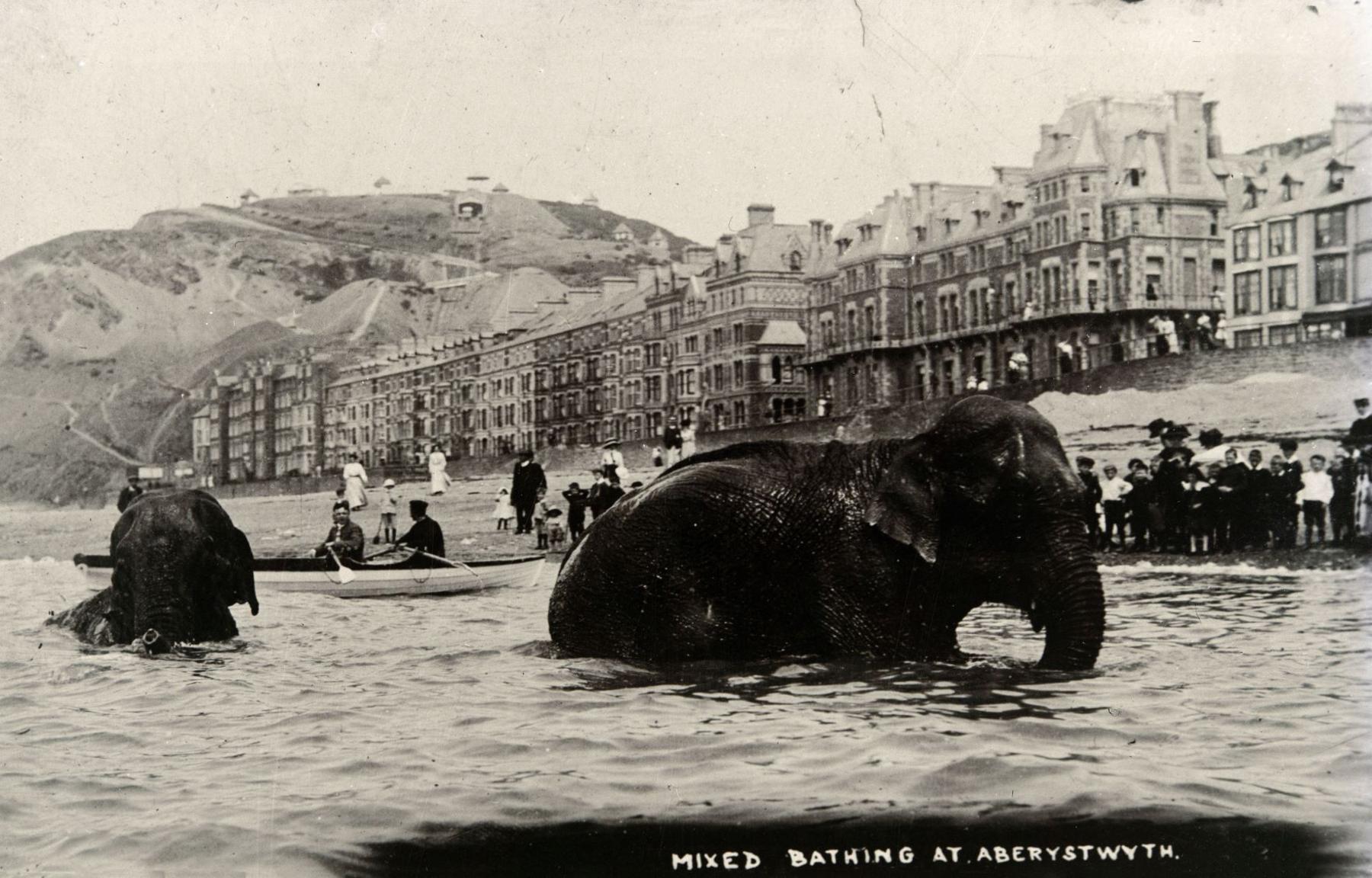
Will Troughton believes Bostock and Wombwell's Menagerie took the elephants to the beach as a publicity stunt for their show
Two elephants take a dip off the Welsh coast while onlookers dressed in Edwardian garb watch on in amazement.
More than a century after Arthur Lewis captured this improbable scene in Aberystwyth, his image still provokes delight from those who come across it.
Elephants Salt and Pepper were the star attractions in travelling animal show Bostock and Wombwell's Menagerie, which was performing in the Ceredigion town.
"I think the main reason they took them down to the beach was to publicise the fact they were in town," said Will Troughton, curator of photography at National Library of Wales in Aberystwyth.
"You couldn't really miss two elephants walking through the main streets of Aberystwyth,"
The travelling "beast show", which was in operation from 1846 to 1931, spent just two days in Aberystwyth.
It was once perhaps Britain's most successful travelling menagerie, touring its assortment of exotic creatures - including monkeys, brown bears, lions and tigers - all around Britain.
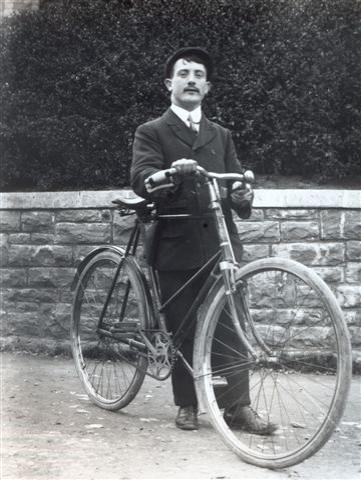
Arthur Lewis sold his photographs as postcards in his father's shop
Keen photographer Arthur would take pictures at local events and make them into postcards to sell at his father's shop in the town.
This particular picture, with the town's imposing Victorian promenade and Constitution Hill in the background, would have taken some work to arrange.
"It's taken across the water so Arthur Lewis must have gone out on a small boat," said Will.
"You can see in the background there's a small skiff there so he must have got one of the boatmen there to take him out so he could take the photo."
Once on the boat, getting the shot would have been a challenge.
"He would have been on a boat that's bobbing around, exposure times were quite long at that time so he's done a good job to get that photo. It was not that easy," said Will.
Some may be surprised to learn the photograph did not make it into the newspapers at the time.

Bostock and Wombwell's Menagerie toured its travelling "beast show" all around Britain
"They very rarely put photographs in at the time because they were very expensive to do and you had to prepare a copper plate from the glass negative and then print it up, so it was a time consuming process and often the event would be out of date by the time they could do that," explained Will.
The photo was taken a week after the coronation of King George V and just ahead of the new king and queen's visit to the town to lay the foundation stone for Wales' national library.
"The whole town would have been buzzing at that time," said Will.
"To top it all you've got these elephants walking along the main street."
The photograph's title - Mixed Bathing in Aberystwyth, which has been penned on to the image by the photographer, tells us something about attitudes in the early 1900s.
"Up until 1901, mixed bathing in Britain was banned so men and women couldn't bathe together," said Will.
"[When it was] repealed it took quite some time for a lot of places to understand that it wasn't immoral or immodest for husbands and wives for example to bathe together so it wasn't until 1908 that mixed bathing in Aberystwyth was officially sanctioned.
"So the idea of mixed bathing in 1911 was still to an extent, quote: a new concept."

Two women bathing in the sea at Aberystwyth in 1916, 15 years after the legal segregation of bathing areas in Britain ended
The photograph of Salt and Pepper, which can be seen on various souvenirs in many gift shops in the town, seems to have become part of the town's identity.
The image has inspired a novel - Elephants and Hot Chocolate by the Seaside by Adam Leonard Phillips - and even an urban myth.
A story many in the town have heard is that after their sea dip the elephants were taken for a walk up the town's very steep Constitution Hill, which can be seen in the background of the picture.
The story goes that one of the elephants stumbled and crashed into its funicular railway, killing two people and a dog.
"It's absolute tosh, there's not a word of truth in it," said Will.
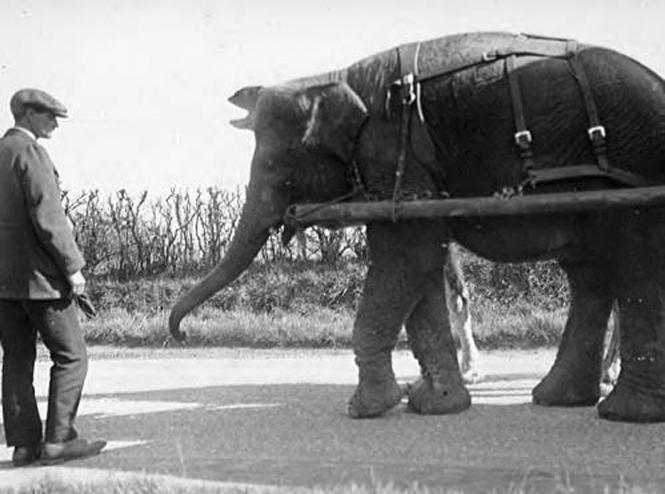
Bostock and Wombwell's Menagerie included monkeys, brown bears, lions and tigers
After Arthur died in 1952, the national library received between 1,200 and 1,300 of his negatives.
Throughout his photography career, Arthur captured thousands of images in the town, everything from royal visits to storms that battered the area, but this is one of his most enduring and reproduced images.
But why has this photo continued to appeal?
"I think it's the incongruity of it really and also the photo itself. It has a nice balance to it," said Will.
"It's nostalgic in one way but then also it's slightly bizarre and I think people like things that have got that slightly bizarre element to it."
It is a favourite of his too.
"I must admit, I'm very fond of it," he said.
"Even though you see it everywhere I think it must be one of Arthur Lewis' most famous individual shots.
"It's very iconic."

A SPECIAL SCHOOL: Life in Britain’s biggest special school
FANCY A LAUGH?: Join Rhod Gilbert as he tries out different jobs across Wales

- Published16 September 2023
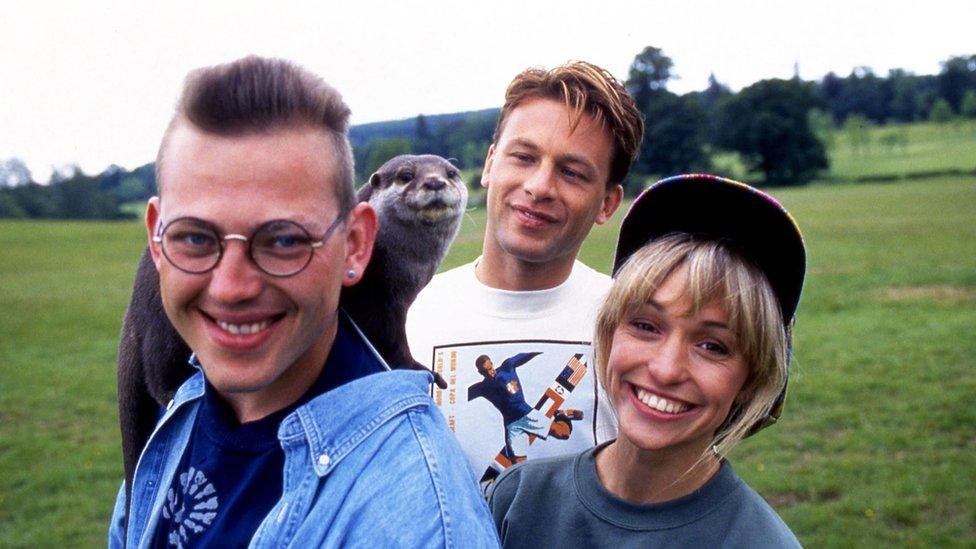
- Published25 August 2023
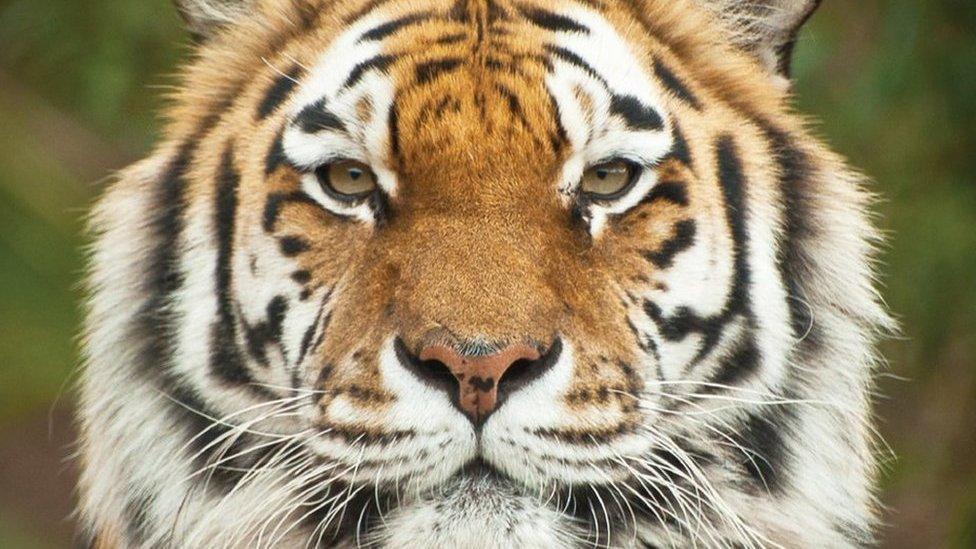
- Published15 April 2011